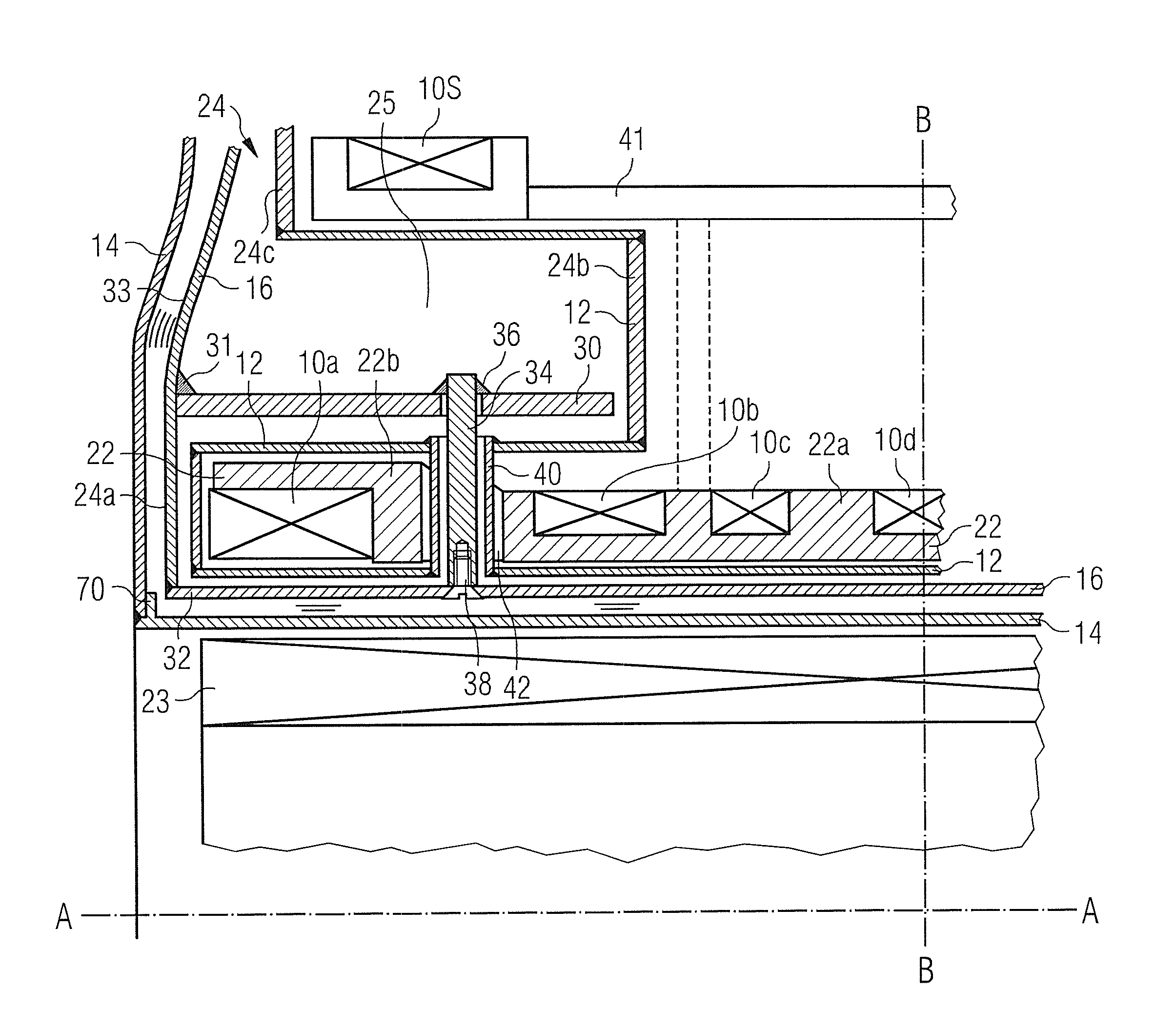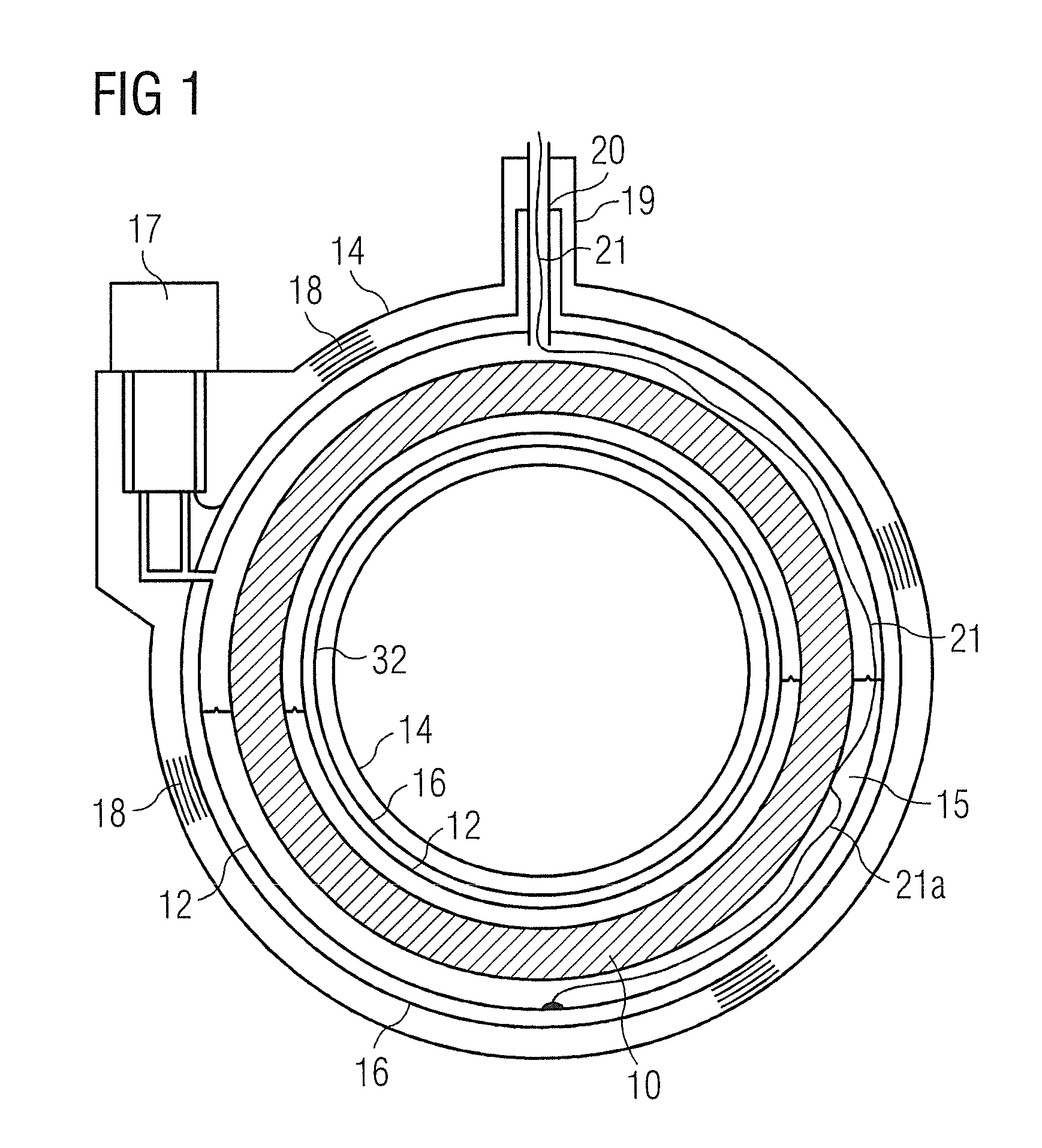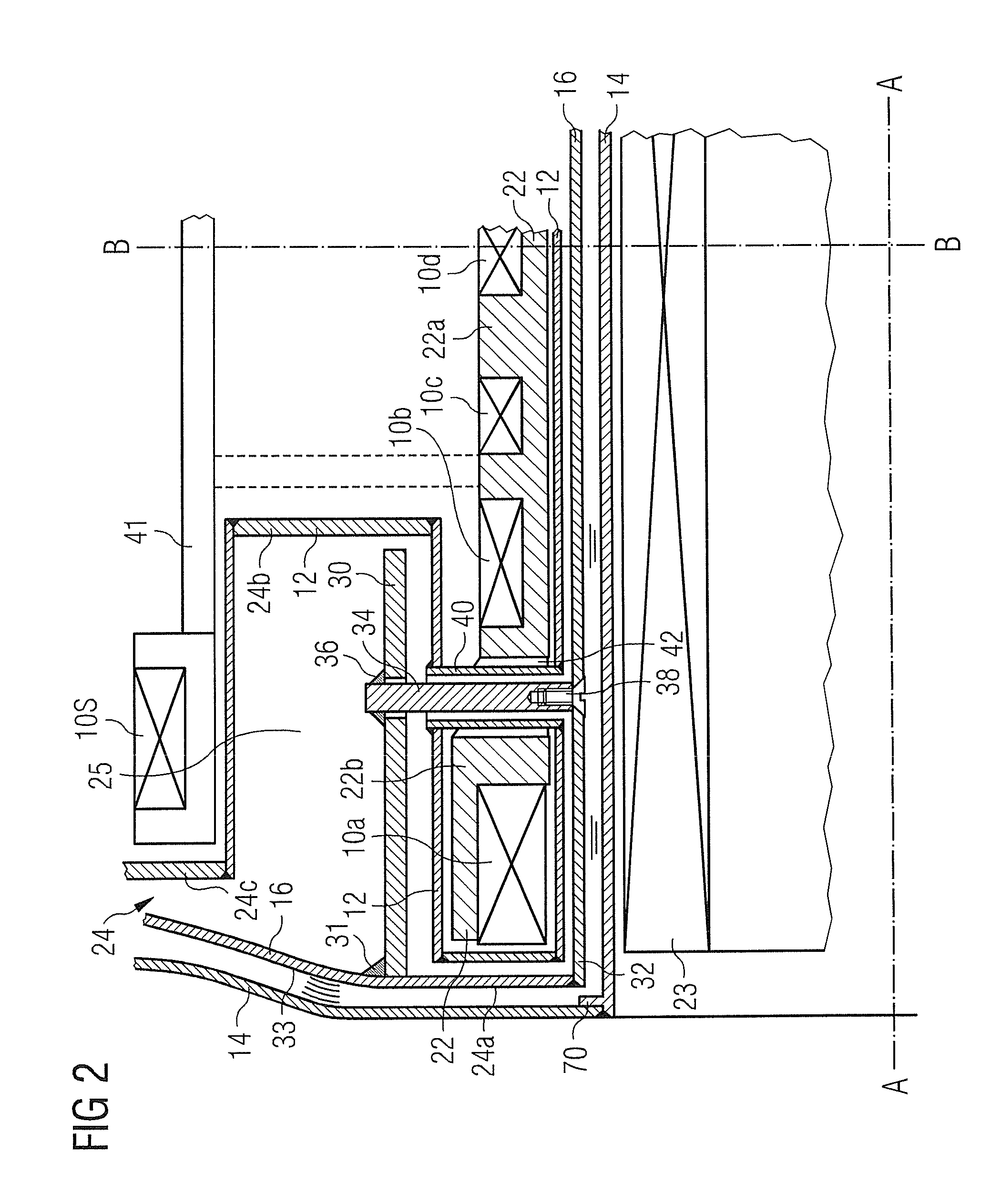Hollow cylindrical thermal shield for a tubular cryogenically cooled superconducting magnet
a superconducting magnet and cylindrical technology, applied in the direction of superconducting magnets/coils, magnetic bodies, container discharge methods, etc., can solve the problems of secondary and tertiary eddy currents, mechanical vibration of the ovc and the thermal radiation shield is heated. the effect of reducing the magnitude of resonance, minimizing the amplitude of mechanical vibration, and reducing the problem of inner tube mechanical resonan
- Summary
- Abstract
- Description
- Claims
- Application Information
AI Technical Summary
Benefits of technology
Problems solved by technology
Method used
Image
Examples
Embodiment Construction
[0035]FIG. 2 shows an embodiment of the present invention, as applied to a “wet” magnet. Features corresponding to features of FIG. 1 are identified by corresponding reference numerals. FIG. 2 represents a part-axial cross section. The cross-section essentially has reflectional symmetry about axial centre line B-B and the magnet system is essentially symmetrical about axis A-A.
[0036]In the illustrated arrangement, coils 10a, 10b, 10c, 10d are mounted on a former 22. As is well-known in the art, the former may be made up of three parts: a central part 22a carrying central coils 10b, 10c, 10d, and two end-parts 22b each carrying an end coil 10a.
[0037]Active shield coils 10s, well known in themselves, are arranged on a separate mechanical support 41 at a greater radius about axis A-A than the central coils 10b, 10c, 10d. A cryogen vessel 12 surrounds the coils and former, and retains a liquid cryogen.
[0038]According to a feature of this embodiment of the invention, the annular end pie...
PUM
| Property | Measurement | Unit |
|---|---|---|
| thick | aaaaa | aaaaa |
| frequency | aaaaa | aaaaa |
| diameter | aaaaa | aaaaa |
Abstract
Description
Claims
Application Information
 Login to View More
Login to View More - R&D
- Intellectual Property
- Life Sciences
- Materials
- Tech Scout
- Unparalleled Data Quality
- Higher Quality Content
- 60% Fewer Hallucinations
Browse by: Latest US Patents, China's latest patents, Technical Efficacy Thesaurus, Application Domain, Technology Topic, Popular Technical Reports.
© 2025 PatSnap. All rights reserved.Legal|Privacy policy|Modern Slavery Act Transparency Statement|Sitemap|About US| Contact US: help@patsnap.com



